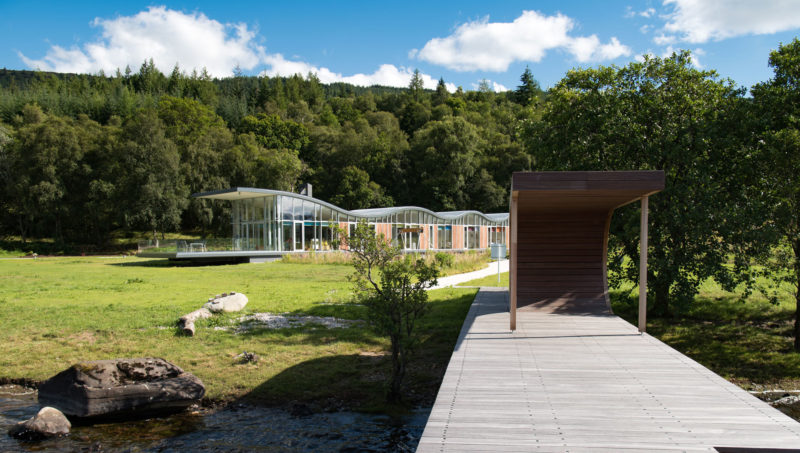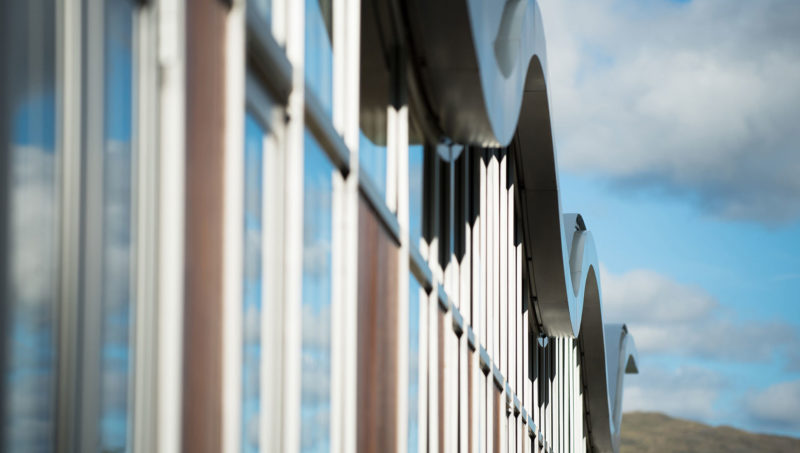The waterside location inspired the design concept for the retreat which features a rippling roof form, reflecting the undulating surface of the loch. Ripple Retreat is a purpose-built sanctuary for children affected by cancer. Set up and funded by, ‘It’s Good 2 Give!’, a charity who provide practical support to families impacted by this disease.
The charity's ultimate goal has been to create a safe, relaxed, and enjoyable escape for families from the challenges of their illness, within a reasonable distance of hospitals and medical treatment.
Situated on the southern bank of Loch Venachar, the Retreat captures an impressive aspect, with beautiful views across the calming water to the surrounding hills.
The connected nature of the living space, has been designed to provide a safe, family friendly environment with easy access for all abilities. Expanses of glass connect the interior of the house to the tranquil setting, whilst also providing important visibility to indoor and outdoor play areas.
The setting has inspired the materiality of the rippling roof, which is clad in pigmento blue zinc to capture the changing light, creating a relationship between the building and the changing ripples of the loch.


